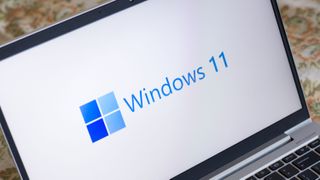Microsoft shares more details about Android apps in Windows 11
Developers shouldn't expect saved state to be secure

Microsoft has shared more information about how Android apps will run under Windows 11.
The company outlined its plans in a blog post detailing how the Windows Subsystem for Android, first outlined at the operating system's launch in June, would operate. The system, currently only available in preview, won't come installed by default.
Users trigger the Windows Subsystem for Android installation by installing an Android app for the first time from the Microsoft store. This installs the Amazon app store automatically. Alternatively, they can install the Amazon app store manually from the Microsoft Store.
Microsoft warned that developers might have to tweak their applications to handle Windows 11's input and display requirements. The company said that while apps using virtual keyboards should work as expected, developers might have to update them to handle unexpected keystrokes, such as navigation via the arrow and tab keys. Android developers should also consider updating their code to handle Windows 11 mouse input, such as right clicks and scroll wheels, it added.
Window resizing might also be an issue, the company warned. Developers should consider the application window's initial launch size and screen orientation and decide whether they allow users to resize the application window freely. The alternative is to letterbox or pillarbox the app using vertical or horizontal bars as necessary.
Microsoft also included a note on application security. Because Windows Subsystem for Android performs software-based per-file encryption, it offers limited protection.
"App developers should not expect their saved state to be secure," Microsoft warned. It also said that although Windows kernel drivers can inspect Android containers and Android application memory, it won't add plans to detect suspicious application behavior in the short term.
Get the ITPro. daily newsletter
Receive our latest news, industry updates, featured resources and more. Sign up today to receive our FREE report on AI cyber crime & security - newly updated for 2024.
The decision to install the Android subsystem separately rather than by default follows a move to decouple Windows Subsystem for Linux from the core operating system.
Danny Bradbury has been a print journalist specialising in technology since 1989 and a freelance writer since 1994. He has written for national publications on both sides of the Atlantic and has won awards for his investigative cybersecurity journalism work and his arts and culture writing.
Danny writes about many different technology issues for audiences ranging from consumers through to software developers and CIOs. He also ghostwrites articles for many C-suite business executives in the technology sector and has worked as a presenter for multiple webinars and podcasts.






